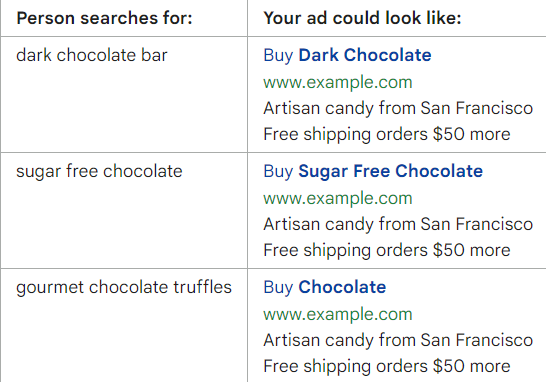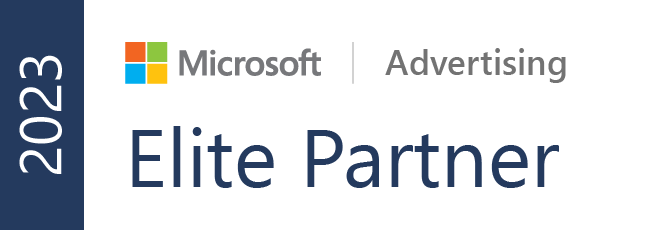Dynamic Keyword Insertion: To make your Ads relevant & earn more Profits.
Paid ad costs are rising. In highly competitive industries, you can expect to pay $50 or more per click. As a result, many businesses are looking to lower paid ad costs by increasing ad relevance.
Dynamic keyword insertion is an ideal strategy to improve relevancy and lower paid ad costs. When used correctly, it can help deliver highly relevant ads with little extra work.
If you aren’t sure what dynamic keyword insertion is or how to make the most of it, you are in the right place.
Dynamic keyword insertion is a technique that allows advertisers to customize their ad content dynamically based on the search terms entered by users. By incorporating the actual search keywords into the ad copy, businesses can create a more personalized and relevant experience for potential customers. This relevance translates into higher click-through rates and improved ad performance.
An example of how Google Ads using the Dynamic Keyword Insertion will look like:

Dynamic ads are the most flexible feature that can change every aspect of your ads, including the main keyword, images, CTA button, and even the landing page users are sent to as the searches evolve.
And, several ad platforms offer dynamic keyword insertions, including Google Ads and Facebook.
Why Should You Use Dynamic Keyword Insertion?
- Improved Ad Relevance: DKI allows you to create highly relevant ads by dynamically inserting the user's search query into your ad copy. When people see their exact search terms in the ad, they are more likely to perceive it as relevant to their needs. This relevancy increases the chances of attracting clicks and conversions.
- Higher Click-Through Rates (CTR): Ads with dynamically inserted keywords tend to have higher CTRs because they directly address the user's search intent. When search terms are reflected in the ad, it catches the attention of potential customers, making them more likely to click on the ad and explore your offerings.
- Enhanced Ad Performance: By delivering more relevant ads, DKI can positively impact your ad performance metrics. Higher CTRs lead to a better-Quality Score, which can result in lower costs per click and improved ad positioning. Ultimately, this can maximize your ad budget and drive better overall campaign performance.
- Time and Effort Savings: DKI simplifies the process of creating multiple ad variations for different keywords. Instead of manually crafting numerous ads, DKI automates the insertion of relevant keywords, saving you time and effort. This is particularly beneficial for businesses with extensive keyword lists or dynamic inventory.
- Ad Copy Consistency: DKI ensures consistency between the search query and the ad copy, which helps create a seamless user experience. When users see their search terms reflected in the ad, it reinforces the connection between their intent and your offering, increasing the likelihood of engagement and conversions.
- Flexibility and Scalability: DKI is highly flexible and adaptable. It allows you to customize ad copy dynamically based on the user's search query, making it suitable for various products, services, and industries. As your keyword list expands or changes, DKI can automatically adjust the ads, accordingly, providing scalability and reducing manual maintenance efforts.
- Competitive Advantage: In highly competitive industries where paid ad costs are rising, using DKI can give you a competitive edge. By increasing ad relevance and attracting more clicks, you can achieve a better return on investment (ROI) and outperform competitors who may not be leveraging DKI effectively.
Remember, while DKI offers significant benefits, it's crucial to implement it strategically.
We are the seasoned PPC experts who can help you strategize with the latest DKI techniques like Conducting thorough keyword research, closely monitoring performance, and regularly optimizing your ads to ensure they align with your campaign goals and deliver the desired results.
How will I create a Dynamic Inserted Keyword?
- Create a list of targeted Keywords for your Dynamic ad group!
Performing keyword research is essential to understand the specific terms users search for in your industry.
Because it enables you to uncover relevant keywords that can drive targeted traffic to your website or ads.
And while conducting keyword research, it's important for you to focus on specific and related terms rather than short and broad keywords.
For instance, if you're in the pizza industry, you might discover terms like "cheese pizza," "pepperoni pizza," or "sausage pizza."
These specific and related keywords provide insights into the exact products or services users are looking for, allowing you to tailor your ad campaigns accordingly.
Tip: Avoid using short and broad keywords to ensure that you only target users who have a higher chance of getting converted, leading to more effective and efficient marketing efforts.
2. Set a goal for your Ad!
What do you want your ad to do? (Asking this kind of question will give you a clarity on how you want your ad to serve)
Determine what specific action you want your ad to achieve.
Whether your objective is to increase app downloads, drive sales, generate leads, boost website traffic, or encourage messaging interactions, defining your goal is the first step in creating an effective ad campaign.
Platforms like Facebook and Google Ads provide various ad formats tailored to specific goals, such as catalogue sales, app installs, lead generation, conversions, traffic, and messages.
Aligning your ad format with your desired outcome will increase the likelihood of achieving your objectives and maximizing the success of your advertising efforts.
3. Choose the correct assets!
Dynamic ads offer more than just keyword insertion into the same ad template. They provide the opportunity to incorporate a variety of assets, such as images, videos, headlines, CTAs, and landing pages.
It's crucial to select multiple versions of each asset while ensuring their compatibility across different configurations.
By leveraging diverse assets, you can deliver more engaging and personalized experiences to your audience. Different images or videos can cater to varying preferences, while multiple headlines and CTAs allow for targeted messaging.
This flexibility ensures that your dynamic ads remain relevant and impactful.
4. Launch your ads and track the results.
After finalizing your ad configurations, it's time to launch your ad campaign.
Focus on metrics that provide meaningful insights, such as click-through rates (CTR) and conversions.
Monitoring your CTR helps gauge the effectiveness of your ads in capturing the attention of your target audience.
A higher CTR indicates that your ad is resonating well and enticing users to click through to your desired destination. By consistently analyzing and optimizing your CTR, you can refine your ad strategy to maximize engagement and drive more traffic.
Conclusion
Are you struggling to create a successful paid ad?
Dynamic Keyword insertion might be the best remedy for this challenge.
y matching ads to searchers’ queries, you can create highly relevant ads that cost less and are more likely to drive clicks.
If you face any issues getting your ads set up, we would be happy to help you!


